In 2015, a total of 65 Durga Puja pandals were organized in different places of Dimapur and Kohima, largely by members of the Marwari Bania community in Nagaland. But, coming to 2021, the number reduced to 43, due to vehement opposition from various Christian groups and organizations. This fact alone speaks a lot about the losses that we have been incurring as a society since the British first set their foot in Bharat, especially the North-East. Today, Nagaland is known as “the only predominantly Baptist state in the world” with more than 96% of the Naga population identifying themselves as Christian.
Christianity came to Nagaland in the mid-19th century with the arrival of the British and Christian missions from Meghalaya and Assam. However, contrary to the popular belief that all Nagas are Christians, there exist till this date several groups of Nagas such as Rongmei Nagas, Zeliangrong Nagas, Zeme Nagas, etc. not only in Nagaland but in a few areas of Assam as well, who have still held on to their traditional religious belief systems and practices. There are about 50 non-Christian Naga families at a village called Viswema, a village of Angami Nagas situated 22 kilometers south of Kohima, bound on the west by the pristinely beautiful Dzukou valley.
These Angami Naga families are adherents of the traditional belief systems that the Nagas followed before the advent of Christianity in Nagaland. They take immense pride in their ancestry and consider the norms and rituals practiced by their forefathers as sacred. They have a system known as genna, which are a set of intricately evolved religious beliefs and rituals, associated with different aspects of do’s and don'ts for people of different genders and age-groups. This culture of the non-Christian Nagas has been sustained through oral traditions that have passed through several generations.
To understand such religious belief systems through Western academic vocabularies such as ‘animism’ or ‘nature worship’ amounts to a partial, one-sided understanding of the multidimensional nature of Sanatan Hindu traditions that have developed in accordance with the unique local and geographical characteristics of a particular region. One such religious belief system which is still in prevalence among the non-Christian population of Angami Nagas is Kūpenuopfū, who is worshiped as the Creator through various oblations, sacrifices, and chants. Kúpenuopfú has a female connotation among the Angamis, as the one who is responsible for the process of life-giving, i.e. birth or creation, commonly understood in Hindu Dharma as Sākti.
Kūpenuopfū, it is believed, incorporates both masculine and feminine aspects of Creation (Srīstī), i.e. Síva and Sákti. Men and women in Naga families who follow Kúpenuopfú have their own different set of rites and rituals, which they are expected to adhere to. Women are responsible for conducting the main religious rituals and observe fasting on specific days. The chief priest, usually the eldest member in the community, announces the rules for the day at dawn and anyone who does anything that is prohibited as per the religious rules and regulations, is meted out the appropriate punishment. Traditionally, both feasting and fasting play a significant socio-cultural role in the lives of the Nagas even today.
An important aspect of Kūpenuopfū is that there is no binary concept of virtue or sin unlike Christianity. It is not considered a sin if a mistake is committed unknowingly. However, it becomes a grave sin if the mistake is committed knowingly and genna is not observed. Before the coming of Christianity, the Angami Nagas also used to worship Miawenūo, a Dēvi who was believed to grant her devotees’ wishes. The Sumi Nagas worshiped another female deity called Lītsābā, who was believed to protect crops from pest attacks and also bless her devotees with good reproductive health. Traditionally speaking, Lītsābā is invoked during the annual post-harvest festival called Tuluni observed in the month of July. It is forbidden for anyone to work in the fields that day.
Among the non-Christian Zeliangrong group of Nagas, the Zeme Nagas worship a male deity called Rāmpāube along with his female consort Tēngrāngpūi who is invoked as the Sákti. Non-Christian Zemes believe that Rāmpāube and Tēngrāngpūi reside at Mount Pāunā (Nagaland’s third highest peak), which incidentally happens to be the home of a ginseng-like medicinal herb believed to bring the dead back to life.
There is also a small section of the Zeliangrong Naga community in Assam’s Silchar who worship Sīvā as Bhūbān Baba at the sacred Bhūbān cave, associated with the Naga spiritual leaders Haipou Jadonang and Rani Gaidinliu. Even today, the Zeliangrong Nagas of Silchar celebrate a grand religious festival on the auspicious annual occasion of Māghi Pūrnimā at the Naga Bīsnū temple (also known as Naga Bīsnū Rākāi) situated atop the Bhūbān hills.
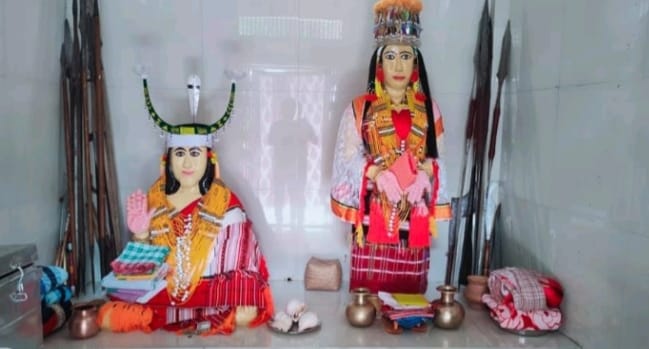
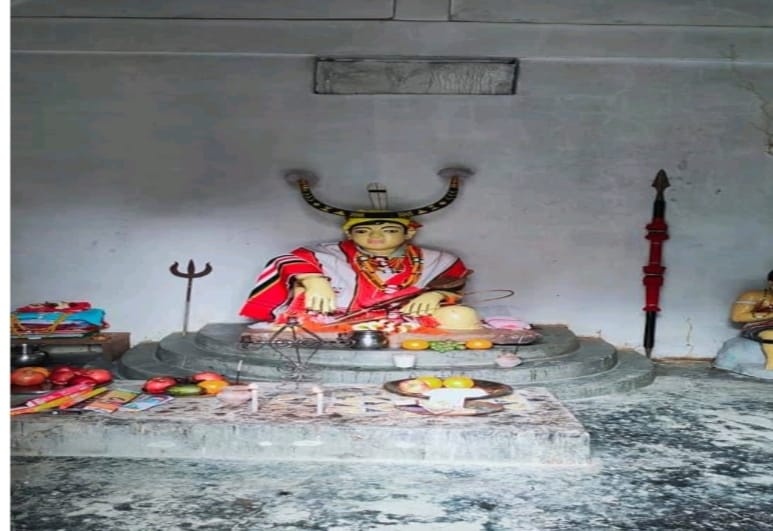
Inside the Naga Bīsnū temple in Bhūbān Pahar, Silchar
The word Bhūbān is a derivative of the Rongmei Naga word Pūbūān which refers to Apōūbaōmēi Bhūānchānīu, one of the Dēvātās worshiped by the Zeliangrong Nagas. Pūbūān/Bhūbān hill is believed to be the abode of Apōūbaōmēi Bhūānchānīu, in whose honor an annual pilgrimage is observed on the occasion of Maha Sīvārātri under the guardianship of the elders of the Zeliangrong Naga community spread over Assam, Nagaland, and Manipur. Apōūbaōmēi Bhūānchānīu is worshiped at the cave of Bhūbān Baba located in the Bhūbān hills. This cave is commonly known to the outside world as the Naga cave. In the dense forests of the Bhūbān hills, archaeological remnants of several Rongmei Naga villages which existed in the past, have been found.
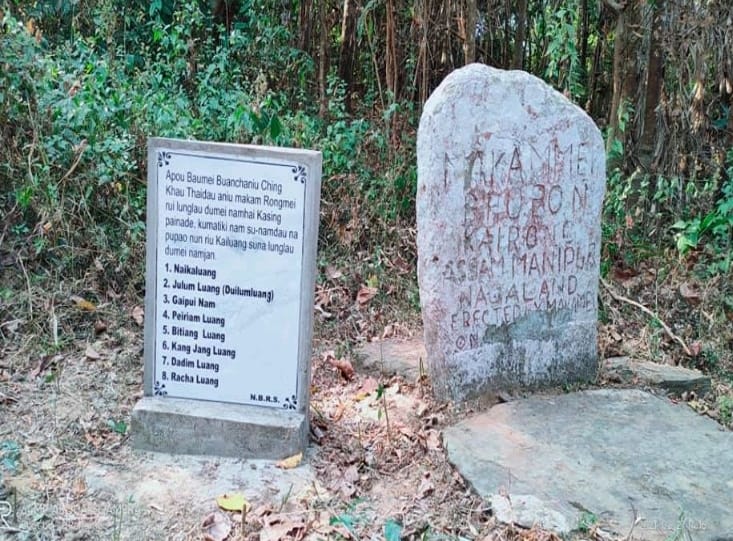
Stones dedicated to Apōūbaōmēi Bhūānchānīu, found on the way to Bhūbān hills
It may be recalled here that the Manmasi National Christian Army (MNCA), a Christian insurgent outfit based in the North-East, was charged with forcing the Hindu Zeliangrong Nagas of Bhūbān hills, Silchar to convert at gunpoint in the year 2009. Seven or more Christian radicalized youths belonging to the Hmar vanavasi community, all dressed in black with a red cross on their back, along with arms, assault weapons and rifles, had visited Bhūbān Pahar in Silchar and pressurized the local population (around 700 Hindu families at present, and also consisting of a significant section of non-Christian Zeliangrong Nagas) to convert into Christianity.
When the locals refused, the rebel leaders desecrated their temples (around 8) by painting symbols of crosses on the walls with their own blood, claiming that it represented their living ‘warrior God’ or Jesus Christ. Later, the Sonai Police, along with the 5th Assam Rifles, arrested 13 members of the MNCA, including their Commander-in-Chief. Guns and ammunition were also seized.
It may be noted here that Haipou Jadonang, the Hindu Naga leader and freedom fighter, had worshiped Vīsnū and another local deity called Tīngkāō Rāgwāng at a cave in the Bhūbān hills. Hence, this cave is considered as a sacred spot by the Zeliangrong Nagas who worship Vīsnū as the chief deity of welfare and all-round prosperity of men and other living beings. Haipou Jadonang belonged to the Rongmei Naga community, which broadly falls under Zeliangrong that represents a combination of four cognate groups of the Nagas – Zemei, Liangmei, Rongmei, and Inpui. In the Zeliangrong Naga religious pantheon, Vīsnū is known by different names such as Monchanu, Bonchanu, Bisnu, Buisnu, etc.
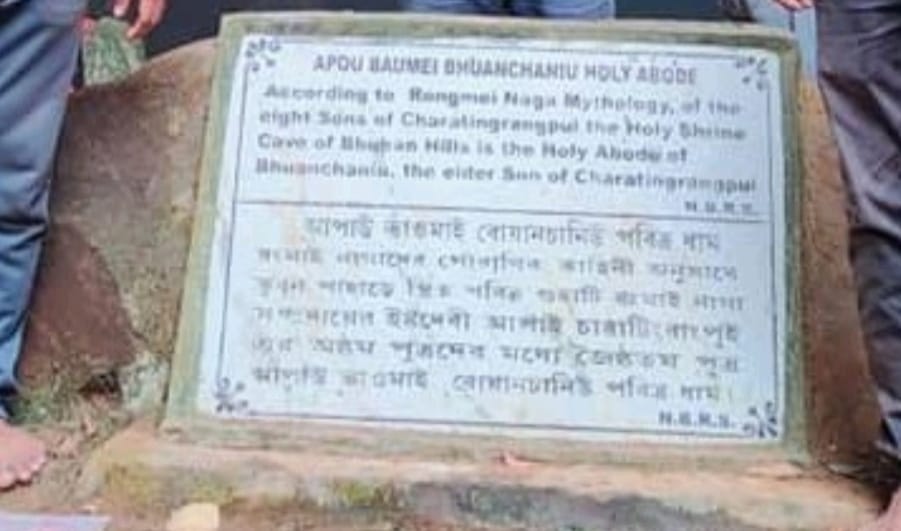
Seen at the entrance of the cave of Bhūbān Baba located in the Bhūbān hills of Silchar
It is very important that we work towards the preservation of these traditional systems of religious beliefs and practices of different groups and communities of people in the North-East. It is also important to understand the fact that although influenced by various local elements, these practices and beliefs are not very different from Dharmic traditions. At present, Assam, Arunachal Pradesh, Manipur, and Tripura are the only states where Hindu Dharma is still in existence. Both the Mahabharata and the Ramayana have been an inseparable part of the history and culture of the North-East. The festivals, different dance forms, and all the surviving Hindu religious places of worship in the North-East are proof enough of this fact.
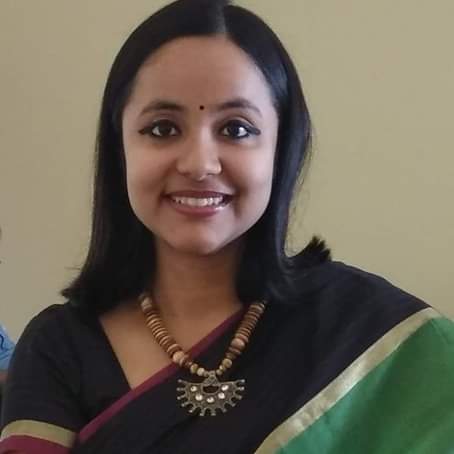 The writer is associated with the Center for Indic Studies, Indus University, Ahmedabad as an Assistant Professor. Her area of interest is North East India, it's history, culture and civilization before the advent of Christianity in the region. She is also a public speaker, writer and Columnist.
The writer is associated with the Center for Indic Studies, Indus University, Ahmedabad as an Assistant Professor. Her area of interest is North East India, it's history, culture and civilization before the advent of Christianity in the region. She is also a public speaker, writer and Columnist.
NEXT ARTICLE

At the southernmost tip of this mesmerising ensemble lies the majestic Great Nicobar Island, boasting an impressive landmass of about 910 square kilom...

Bharath has always been a land traversed by spiritual masters/ Guru since time immemorial. These spiritual masters have always upheld the core princip...

South India contains its fair share of unique pilgrimage centres. These divine places of worship have a prominent Sthala Purana, devoted followers, di...